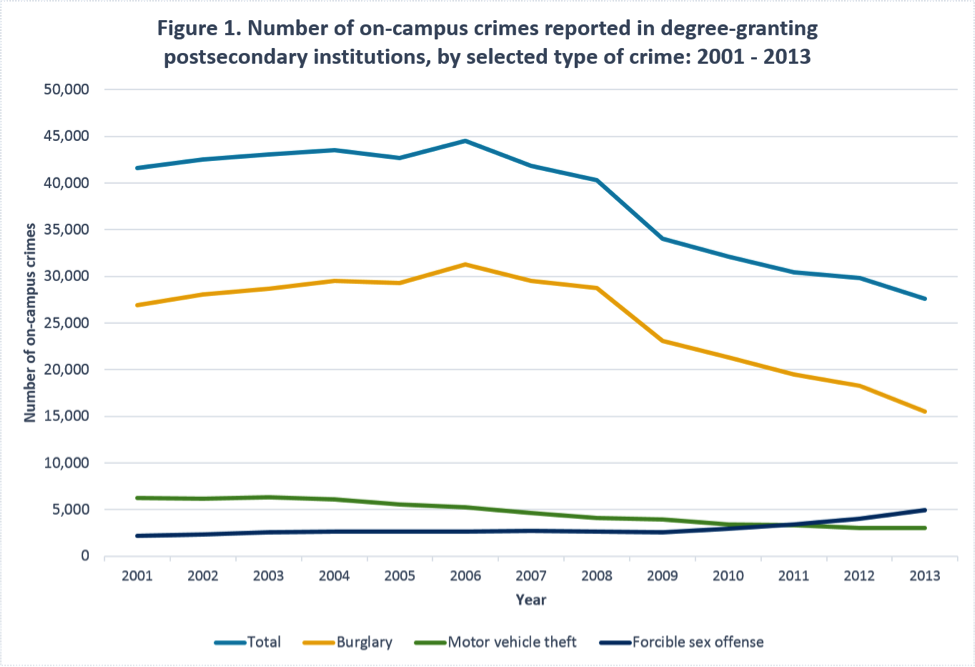Campus Numbers Show Steep Rise in Reported Forcible Sex Crimes
New figures released today show that overall reported crimes on college campuses decreased by 34 percent between 2001 and 2013. However, reports of forcible sex crimes on college campuses increased by 126 percent over this same period. And rates are rising in sheer numbers. Between 2012 and 2013 alone, the reported number of forcible sex crimes rose almost 25 percent, from 4,000 to 5,000.
Taking into account increases in full-time college enrollment, the rate of reported forcible sex offenses on college campuses increased from 1.9 per 10,000 students in 2001 to 3.3 per 10,000 students in 2013.
The Jeanne Clery Disclosure of Campus Security Policy and Campus Crime Statistics Act requires that colleges and universities participating in Title IV federal student financial aid programs annually disclose information about crime on their campuses, including the number of reported incidents and arrests.
The information is collected through the Campus Safety and Security Survey by the U.S. Department of Education’s Office of Postsecondary Education. The Indicators of School Crime and Safety: 2015 report uses these survey data to identify trends in crime and safety on campuses at postsecondary institutions.
Reported Incidents
About 27,600 criminal incidents against persons and property were reported on college campuses in 2013 (See Figure 1). By type, burglaries, forcible sex offenses, and motor vehicle theft topped the list of on-campus crimes reported.
Burglaries (15,500 incidents) constituted more than half of these incidents, followed by forcible sex offenses (5,000) and motor vehicle theft (3,000). The number of burglaries and motor vehicle theft were both lower in 2013 than in 2001 (15,500 vs. 26,900 for burglaries and 3,000 vs. 6,200 for motor vehicle theft).

Arrests
Overall, arrests on college campuses increased between 2001 and 2013 (from 40,300 to 47,800). Most of the 47,800 arrests reported by institutions in 2013 were for liquor and drug law violations.
Arrests for liquor law violations were lower in 2013 than in 2001 (26,600 vs. 27,400). But arrests for drug law violations increased by 70 percent, from 11,900 in 2001 to 20,100 in 2013. After taking into account increases in full-time college enrollment, arrests per 10,000 students for drug law violations increased from 10.2 to 13.4 between 2001 and 2013.
Arrests for illegal weapons possession—about 2 percent of all arrests—decreased from 1,100 in 2001 to 1,000 in 2013. (See Figure 2)
Total on-campus arrests per 10,000 students were lower in 2013 than in 2001 at public 4-year institutions (57.4 vs. 60.1) and nonprofit 4-year institutions (17.2 vs. 24.5). In contrast, the rate per 10,000 students at public 2-year institutions was higher in 2013 than in 2001 (8.0 vs. 7.8).

View more infographics using data from the report.
Anlan Zhang is an AIR Researcher specializing in school crime and safety and national education statistics and surveys.
Jizhi Zhang is a Senior Researcher specializing in STEM motivation, national achievement measurement, and school crime and safety.
